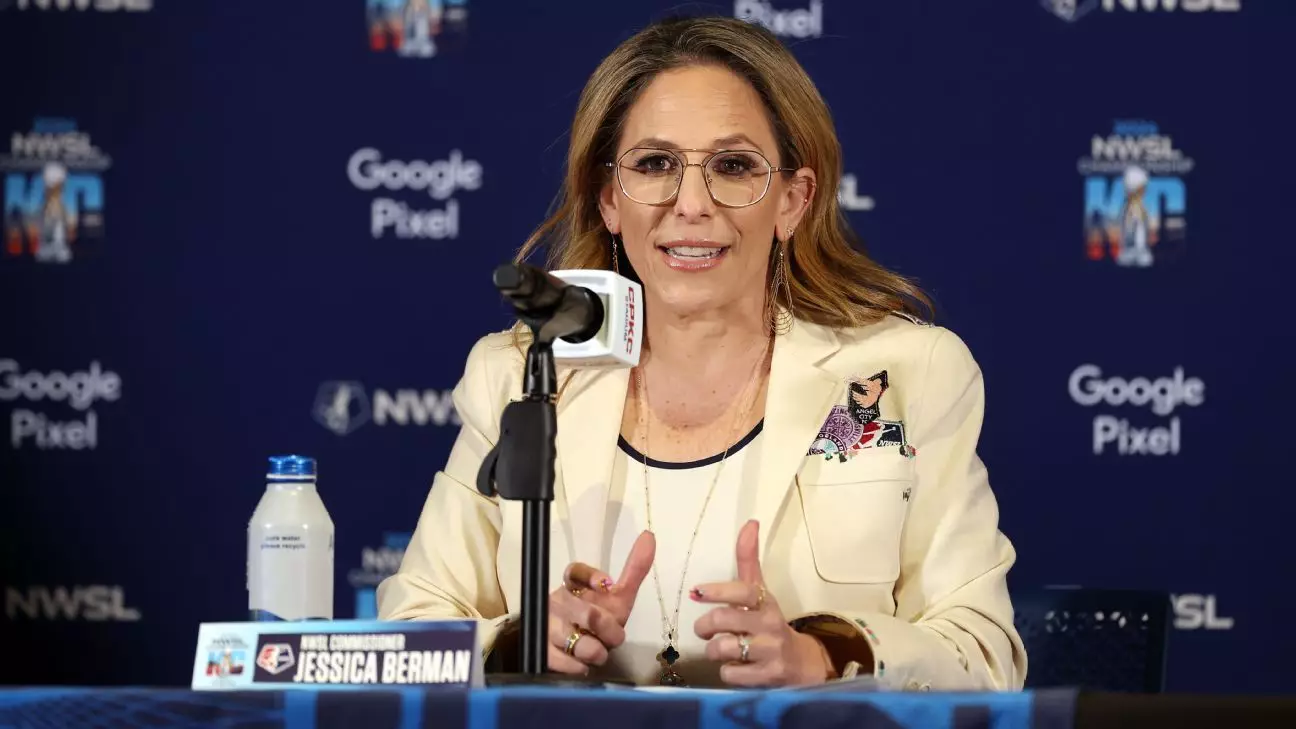The National Women’s Soccer League (NWSL) is on the brink of significant transformation as its leadership, under Commissioner Jessica Berman, has articulated a clear vision for expansion. Set to unveil a new franchise next week—most likely in Denver—NWSL’s growth reflects an ongoing commitment to enhancing women’s soccer in the United States. This upcoming addition of the 16th team raises numerous crucial questions and opportunities about how the league will evolve and compete on both domestic and international stages.
A pivotal point in Berman’s announcement is her assertion that the league’s expansion efforts are far from finished. With the current configuration holding steady at 14 teams and set to extend to 16 before the end of the 2026 season, the NWSL is keen on both aggressive and strategic growth. Berman points out that the league is in dialogue with its board to formulate a comprehensive plan for future expansion endeavors. This goal reflects a keen awareness of both available markets and ownership demands, suggesting a methodical approach to where the league will go next.
The NWSL is faced with ample interest from potential owners in various cities. As Berman indicated, there is no shortage of eager bidders who did not secure a team in the latest round of selections. This indicates robust market interest in women’s soccer, which can only serve to bolster the league’s sustainability and competitiveness in the future. The narratives surrounding potential expansions reflect a desire for inclusivity and engagement in cities where women’s sports can thrive.
When considering where the league will expand next, Berman shared three defining criteria. First, potential owners must not only possess financial resources but also have a forward-thinking vision aimed at nurturing the growth of a franchise. This forward-looking perspective is essential in a landscape where the traditional model of sports ownership is rapidly evolving.
Next, infrastructure emerges as a critical factor. Berman emphasizes the necessity for appropriate facilities that will meet not only current standards but anticipate future developments within professional women’s soccer. The league’s emphasis on infrastructure indicates a growing recognition of the importance of professional-grade stadiums and training facilities in enhancing the player experience, fan engagement, and overall brand value.
The third point of consideration is market viability. While Berman highlights the expansiveness of potential markets as a reason for its lower priority, she does acknowledge that the right market conditions are crucial for a franchise’s success. This blend of ownership quality, facility readiness, and market potential is a balanced strategy to ensure sustainable growth.
As the NWSL approaches the 2025 season, its operational framework will see significant changes, particularly with the elimination of the college draft and the introduction of free agency. Such transitions present a substantial shift for a league that has historically relied on established protocols for player acquisition. Berman candidly notes that this deviation represents uncharted territory, posing challenges for both technical staff and players alike.
The absence of a traditional draft mechanism will necessitate a recalibration of how teams attract and retain talent. The collective bargaining agreement established between the NWSL and its players’ association embodies this shift, emphasizing the importance of being agile as an organization while navigating these changes. Creating opportunities for players, especially those currently without contracts, represents a delicate yet essential task for the league, which must ensure retention and morale among its athlete pool.
Moreover, with the announcement of the complete schedule for the 2025 season—featuring initiatives like Rivalry Weekend and the return of Decision Day—the NWSL is clearly signaling its intent to keep fans engaged during this transitional phase. These innovations suggest not only a focus on on-field action but also a commitment to enhancing the fan experience, which is crucial for the league’s overarching success.
The NWSL’s current phase of expansion showcases a deliberate balancing act between ambition and strategic foresight. As the league welcomes new franchises and adapts to evolving structures, its focus on ownership, infrastructure, and market potential aims to solidify its position within the sporting landscape. The journey ahead promises challenges, yet it also harbors vast potential for growth and elevation of women’s soccer in the U.S.


Leave a Reply